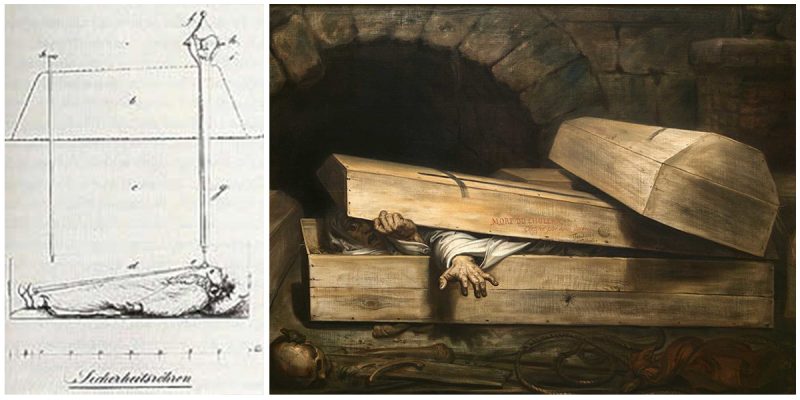Taphophobia is the medical term for the fear of being buried alive as a result of being incorrectly pronounced dead.
The fear of being buried alive has been a constant companion during the yellow fever and cholera epidemics of the 18th and 19th centuries, but accounts of live burial have been recorded even further back. This led to the invention of many safety devices which could be incorporated into coffins.
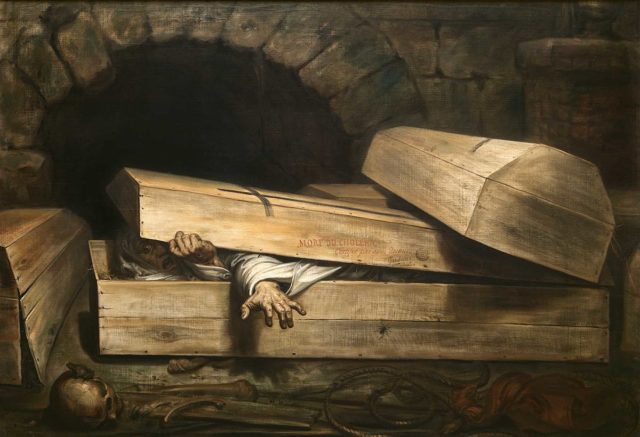
There were tons of different designs. More than thirty different patents for “safety coffins” were registered in Germany alone during the second half of the nineteenth century, while twenty-two were registered in America from 1868 to 1925.
In 1792, Duke Ferdinand of Brunswick commissioned the first safety coffin for himself, which included a window to allow light in and a tube to provide a fresh supply of air.
Instead of having the lid nailed down he had a lock fitted, and he had two keys into a special pocket sewn into his burial shroud: one for the coffin lid and a second for the tomb door.
Improvement of safety coffins and their mechanism continued. The Germans were particularly ingenious when it came to safety coffins, patenting over 30 different designs in the 19th century. Probably the best-known design was that of Dr. Johann Gottfried Taberger.
In 1829, he designed a system of ropes that attached the corpse’s hands, feet and head to an above-ground bell, which would alert the cemetery watchmen.
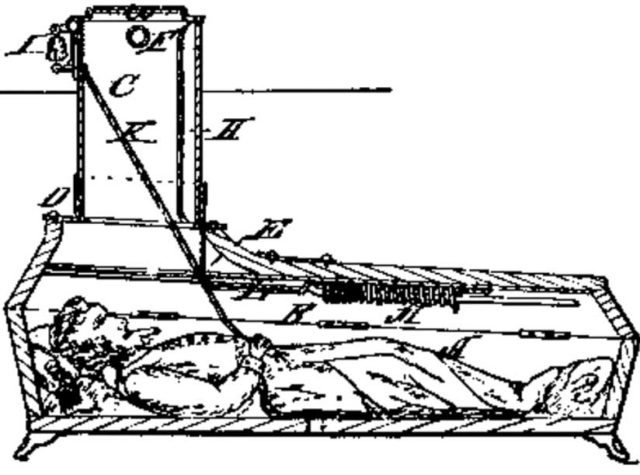
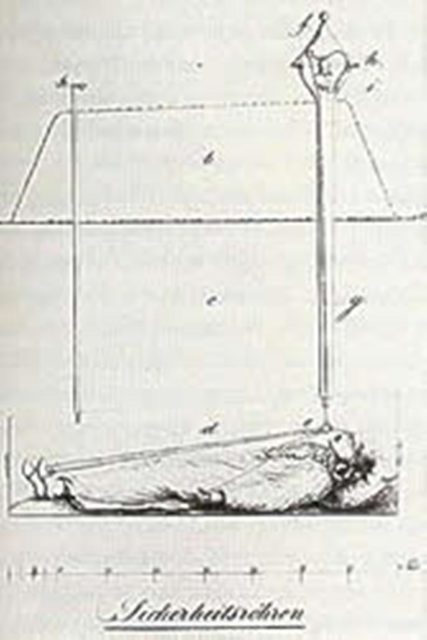
One inventor even buried himself alive to demonstrate the efficiency of his device.
For several hours, Dr. Adolf Gutsmuth remained underground while his assistant fed him sausages and soup through a feeding tube built into the coffin. Another example was Franz Vester’s 1868 “Burial Case.” He added a tube through which the watchmen could view the face of the “corpse”.
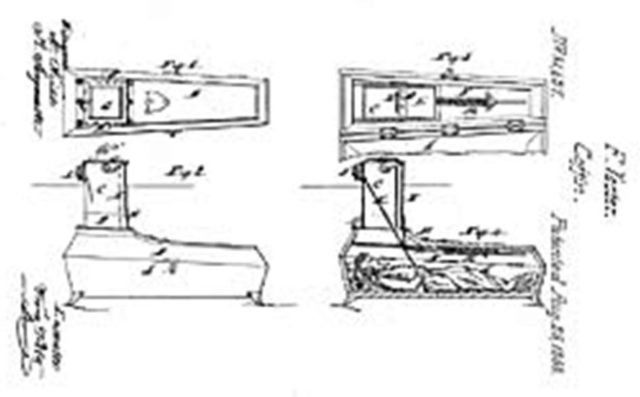
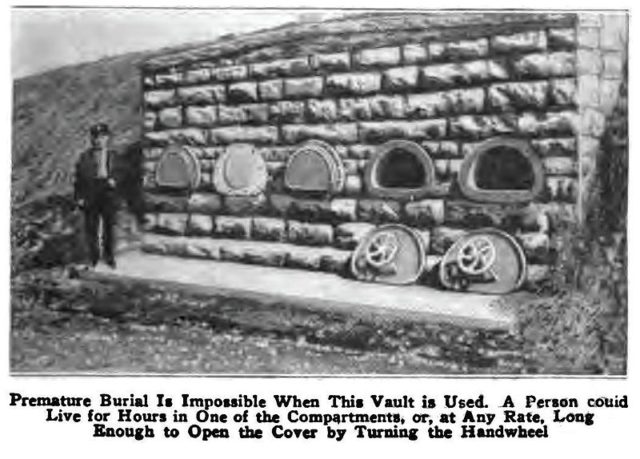
It is believed that the phrases “saved by the bell,” “dead ringer” and “graveyard shift” come from the use of safety coffins in the Victorian era. However, there are no documented cases of anybody being saved by a safety coffin.
Here is another wacko story from us:One of the most painful form of medieval torture- the rack
Of course being buried prematurely is one of the most terrifying of all fears, but because modern medicine allows us to determine whether someone is dead with a lot more certainty than in centuries past, the safety coffin craze seems to have died out.
